End flanges partially formed
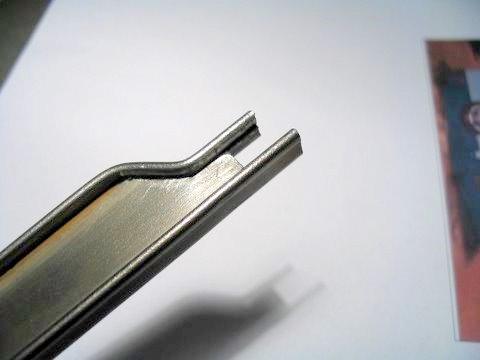
Two ends finished and silver brazed
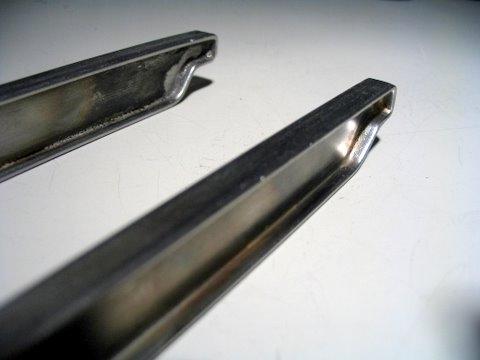
Beginning the assembly of the skid
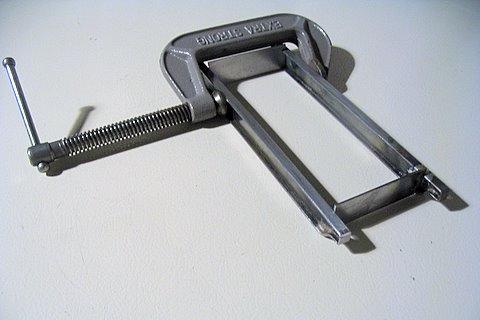
Lots of clean-up and silver
brazing yet to do

A dull pencil is a sign that lots of
work has been going on!
(those are not "rusty spots" but some sporadic copper plating that happened in the pickle solution)
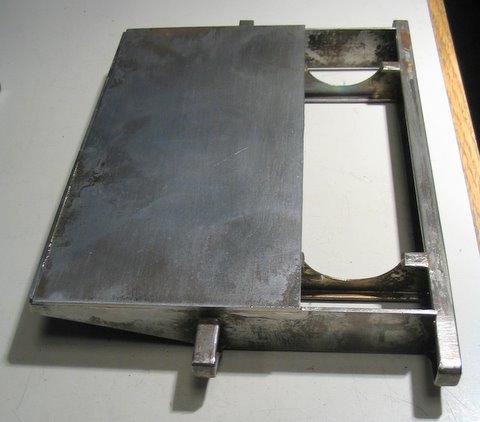
Convection-section floor
with the supporting gusset piece awaiting brazing
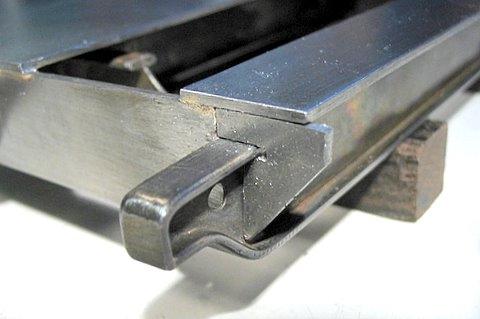
The mud drum shell being tested in its eventual position
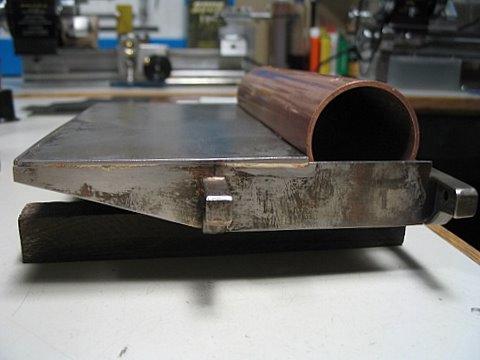
Cooling off - upside down after silver
brazing
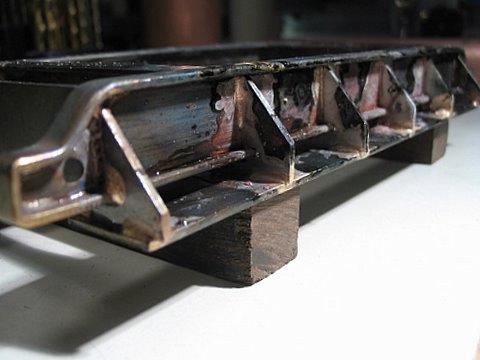
Back into the acid!
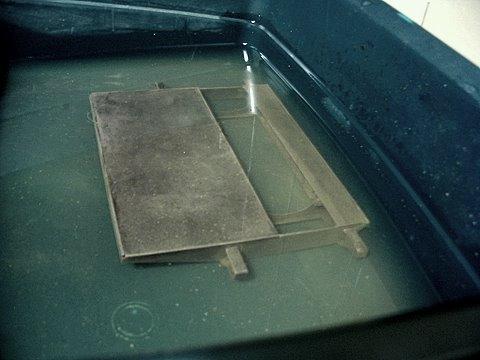
Painted in red oxide...the mud drum cradle is
visible here

Note the minimum amount thermal contact surface area between cradle and
drum. I am making every attempt to prevent heat loss from the drums and
tubes. I intend to totally eliminate any metal-to-metal contact between the
boiler and its casing. The casing will be well insulated with
Cerrablanket material.
The finished skid on the bench awaiting flat black
paint
Fitting the front (inside) corner of the casing wall-retainers
(not yet screwed down)
Completed wall retainers
(bolts yet to be cut off flush)
Cutting the cheeks to create cross lap joints in the front plate stiffening bars
Checking the cross lap joint fit
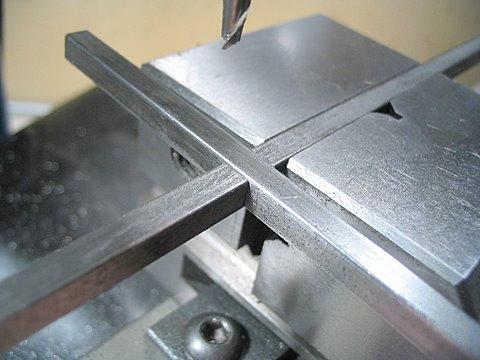
Front plate mocked-up
Stack material will be made from this piece of thinwall
steel electrical conduit
Checking casing wall retainer height for parallelism on a
granite surface plate
(prior to silver brazing the steel angle to the boiler
casing's front plate)
The retainers are only screwed (not brazed) to the skid and will be easily
removable
A small length of the retainer silver-brazed to plate
Dremel disk (black circle) cutting through after chain-drilling for steam drum opening
( - those
are sparks, not scratches to the left! )
The end of a dirty job!
Same opening after filing smooth
(this opening will be covered by a round plate, leaving an identical-sized
hole to the lower drum access hole)
Just 3 more sides, 4 roof sections, a burner unit
and the pressure vessel to go!
Note that the bottom of the lower
drum access hole
has been cut into the red oxide skid assembly,
as per the prototype
The opening on the right is the burner
firehole
The rectangular boiler flue gas outlet is
marked out on the side wall
Flue outlet cut out - yet to have the stack duct attaching flange
added
This is hard to understand from
pictures:
The front and back plates lap over the skid, while the side walls simply butt against the floor of the skid. There is a reason - inside access for inspection will be provided by lifting the complete roof and side walls in one piece upward from between the front and back plates. Note there is a small reveal of those plate's edges past the side walls..
As the project progresses a matching base trim strip at the bottom of all walls and thin batons reinforcing the side walls will be added to resemble the prototype. Actually the prototypes use small T-bars on the sides, but in proper scale they would be very fragile for a working unit of this size.
Inside retainer strip keeps the wall (and ceiling
eventually) from going in too far
(The main purpose is to provide a seal against air
leaks
into the enclosure which would destroy the draft)
Starting fabrication of the roof
My plan is to edge-braze the pieces with Easy-flo
45
Yeah, ok - I got away with it...
Better than expected
The shed roof section on the right will be silver
brazed in
situ

(the shed roof piece on the right actually overhangs the wall - that's a pencil line on the roof, not the top edge of the right wall)
Checking that the four corners are in one plane on a granite surface block
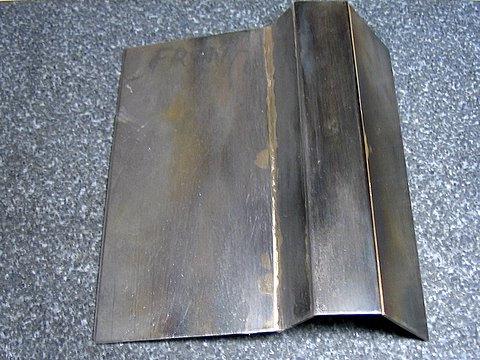 Now it's time to join walls and roof
Now it's time to join walls and roof (along the white seam)
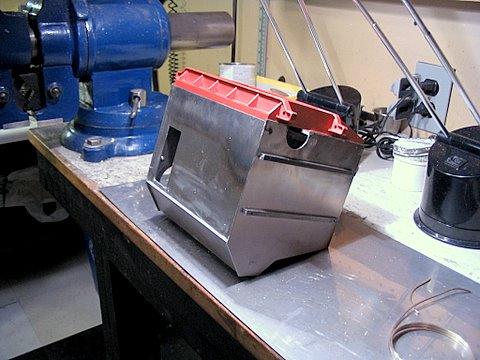
Chopin' up some silver brazing alloy
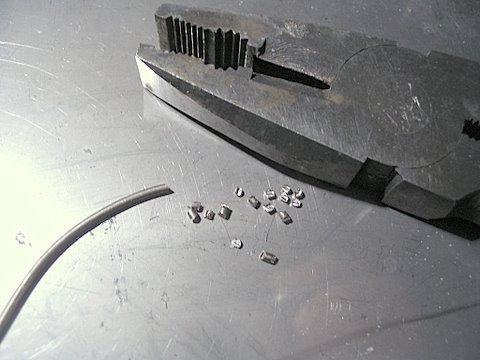
Ready to go
After the heating
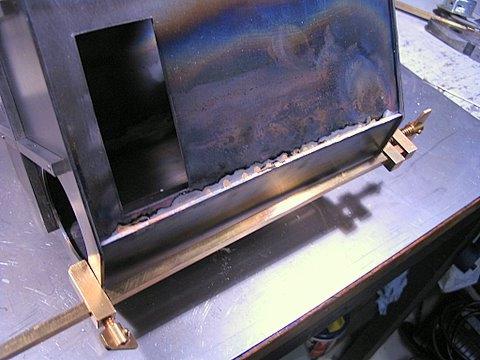 Easy-flo 45 has flashed into the joint
beautifully -
Easy-flo 45 has flashed into the joint
beautifully -
Hooray for propane gas and a four-dollar torch!
These last shots show how the boiler casing looked
as of Dec 16, 2008.
There is still quite a bit of cleanup and trim work to be completed...also a couple more openings at the back and flanges to be fitted. The entire inside surface of the enclosure will be lined with shiny aluminum tape, covered by a one-half-inch layer of high temperature thermal blanket insulation. There are holes needed for various connections to the upper steam drum (upper one) - such as water gauge glass, pressure gauge, feedwater inlet, blowdown outlet and on the top - two safety valves, a main steam outlet, vent valve etc..
The copper pressure vessel components will be started in the
New Year (2009) after I have time for a good clear run at them. I
am looking for a 1/2" phosphor bronze rod to make the threaded bushes for the
drum. People in my area tend to throw up their hands and say "what is
phosphor bronze?" Gunmetal which is also suitable for this purpose is unheard of in North America.
There is Commercial Bronze - no good, as it
contains too much zinc, there are machining bronzes which contain lead, but Phosphor
Bronze A, B or C are almost "pure bronze" - copper and tin. They will not
disintegrate in a model boiler like many of the brassy bronzes.